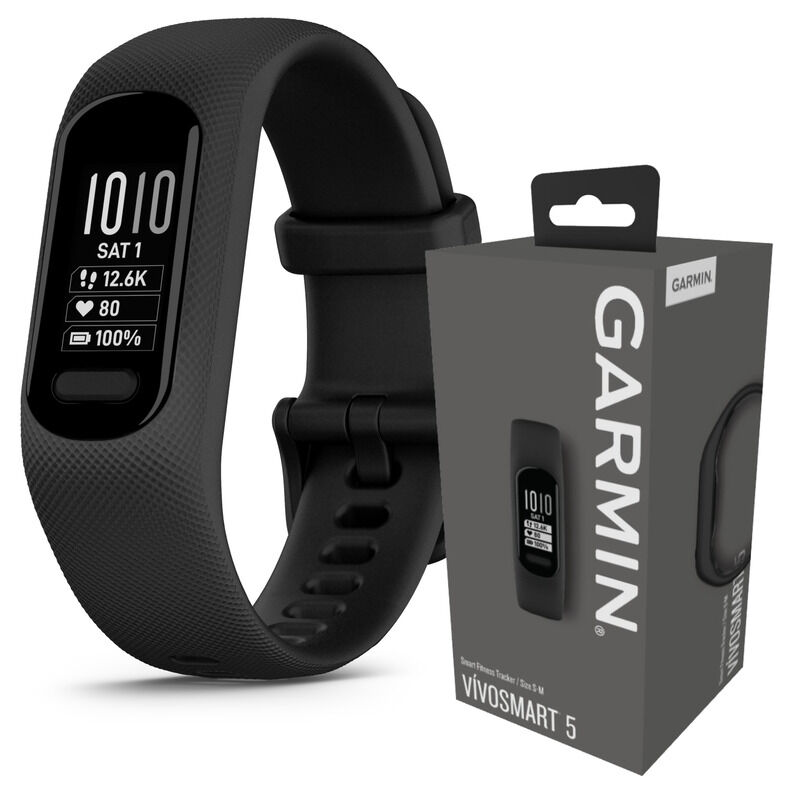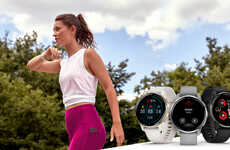
Garmin's Vivosmart 5 Can be Worn on Either Arm
Colin Smith — May 5, 2022 — Lifestyle
Garmin released the 'Vivosmart 5,' the fifth iteration in its line of GPS-enabled health wearables. The Vivosmart 5 improves upon its predecessor with smoother performance, a physical button, and a compatibility option for both arms. While the previous Vivosmart watches were uniform in their design, meaning they were technically able to be worn on both arms, the interface was not as intuitive in order to account for this.
With the Vivosmart 5, users can select which arm they would like to wear the device on, and the screen will adjust accordingly. On top of this, the button on the wearable allows users to navigate menus effectively in the event that the touchscreen is not accessible or responsive. Aside from these changes, the Vivosmart 5 boasts the same array of smart health-tracking features as its predecessor, including blood-oxygen monitoring, heart rate monitoring, sleep tracking, and more.
Image Credit: Garmin
With the Vivosmart 5, users can select which arm they would like to wear the device on, and the screen will adjust accordingly. On top of this, the button on the wearable allows users to navigate menus effectively in the event that the touchscreen is not accessible or responsive. Aside from these changes, the Vivosmart 5 boasts the same array of smart health-tracking features as its predecessor, including blood-oxygen monitoring, heart rate monitoring, sleep tracking, and more.
Image Credit: Garmin
Trend Themes
1. Gps-enabled Health Wearables - The potential to increase accessibility and accuracy of health tracking through integrated GPS technology in wearable devices.
2. Ambidextrous Wearable Design - Designing wearable technology with interface and functionality to accommodate for users wearing watches on either arm.
3. Non-touchscreen Navigation - The integration of physical buttons and alternative navigation methods in wearable technology as a backup to touchscreen functionality.
Industry Implications
1. Health and Fitness Wearables - Developing and improving wearable devices that can monitor vital signs, exercise, and nutrition.
2. Consumer Electronics - Making devices more user-friendly, intuitive, and accessible for a wider range of customers.
3. Personalized Health Technology - Customizing health technology to different user needs and lifestyles through platforms in hardware, software, and data analysis.
6.3
Score
Popularity
Activity
Freshness























